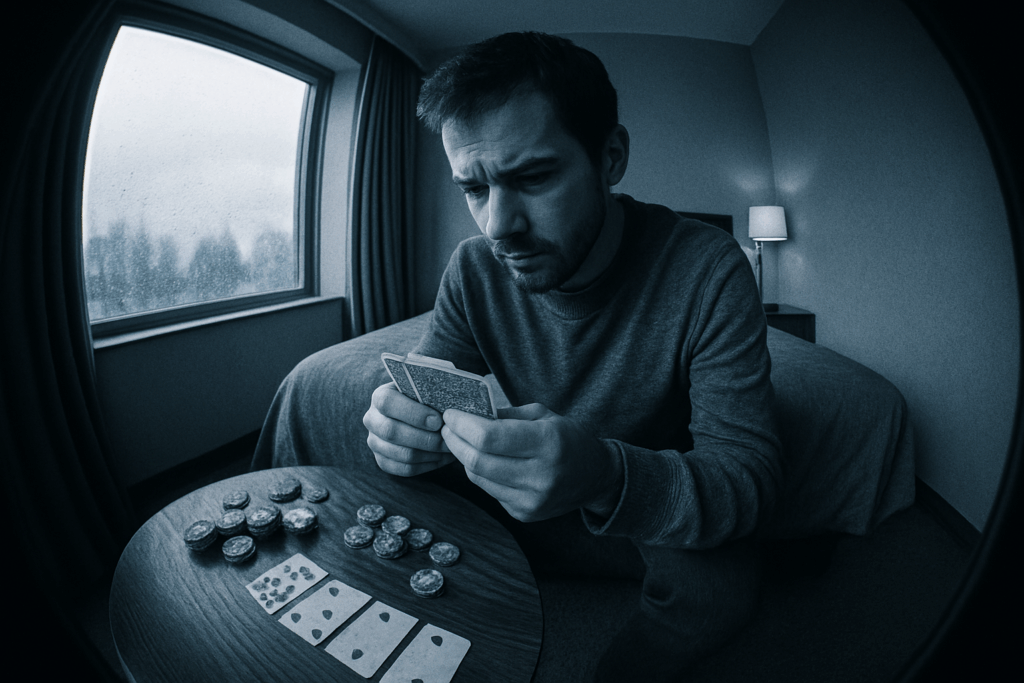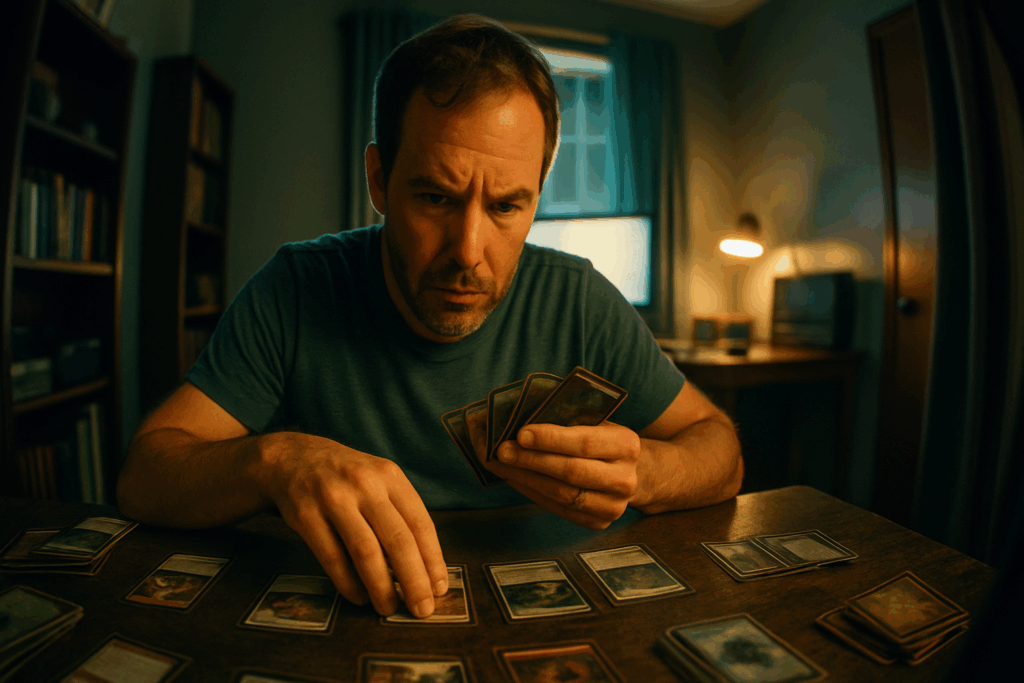Know the Fundamentals—Cold
Let’s start with the basics, because if you don’t know this stuff cold, the rest won’t matter.
First: hand rankings. There’s no glory in guessing whether a flush beats a straight when the pot’s on the line. Memorize them. Drill them until they’re second nature. From high card all the way to royal flush—this isn’t trivia, this is your foundation.
Next: table position. It decides how much info you get before making a move. Being ‘on the button’ means you act last, which gives you a huge edge. Early position? You’re flying blind. This changes what hands you play and how aggressively you play them. Don’t ignore it.
Last: betting structure. Understand how blinds work—small blind, big blind—and how action flows clockwise from UTG (under the gun). Betting rounds go from pre-flop, to flop, turn, river, then showdown if needed. If you don’t know where you are in the hand—or what’s still to come—you’re just guessing. And poker punishes guessers.
Get these fundamentals locked down. Everything else builds from here.
Read the Table, Not Just the Cards
Winning poker has less to do with your hand and more to do with what everyone else is doing. Patterns emerge fast if you’re paying attention: who always raises pre-flop? Who never defends their big blind? Who slows down after hitting top pair? These behavioral leaks are your edge.
Even online, observation windows matter. Just because you can’t see faces doesn’t mean you’re blind. Watch betting speed. Look at awkward pauses after big bluffs. Some players change bet sizing when they’re strong. Others tighten their timing tells when they’re weak. Take notes. Use the data the game hands you.
And don’t underestimate timing shifts. A player who suddenly hesitates on the turn after confidently betting the flop? That’s useful. A snap call from the tight guy who’s usually slow? Also useful. You’re not just reading cards—you’re reading rhythm. When the pace changes, something shifted.
If you’re not watching, you’re guessing. And poker punishes guessers.
Play Tight-Aggressive (TAG)—Here’s Why
If you only master one style, make it Tight-Aggressive. TAG is the base of solid, long-term poker. Why? Because it cuts the fat and focuses on value. You’re selective with hands—tight—but when you’re in, you play to win—aggressive. That alone makes you unpredictable and harder to read. It also protects your bankroll from the slow bleed that comes with playing too many junk hands.
Knowing when to shift gears is half the game. Got position and a strong hand? Push. Weak table or scared money in the pot? Pressure them. But if you’re getting reraised by a rock, or the board screams danger, back off. Discipline beats bravado.
New players often make the same mistake: they start with TAG, then get bored. They want to get fancy. They bluff too much, chase too hard, or open up their range too wide without the skills to navigate it. That’s when bankrolls burn. Stick to TAG until you’ve earned the reads and instincts to get creative. Foundation first, flair later.
Bluff Smarter, Not More
Bluffing isn’t magic—it’s math and timing. A profitable bluff isn’t about pushing chips and praying. It depends on a few real conditions: your story needs to make sense, your opponent has to be capable of folding, and the board must support the lie you’re trying to sell. Try bluffing into three players or a calling station? You’re donating.
Semi-bluffing is sharper. If you have outs—like a flush or straight draw—it means you have real equity if you’re called. This keeps pressure on your opponents while still giving you a plan B. Push when you’ve got potential, but don’t go overboard. Semi-bluffs are about leverage, not hope.
And don’t sweat the failed bluff. That’s feedback. What did they call you with? Was your line too obvious? Did you tell an inconsistent story? Every failed bluff teaches something. Shrug, log it, and sharpen up.
Bluffing is a tool. Use it when the table, timing, and texture all line up. Otherwise, don’t get fancy—just fold and preserve your stack.
Bankroll Mindset: Don’t Burn Out
Poker looks glamorous from the outside—chips flying, big pots, all-in drama. But staying in the game takes more than guts. It takes discipline. That starts with setting boundaries before the first hand is dealt. Decide on your buy-in limit, loss ceiling, and win goal. Stick to them. No emotion-fueled second bullets. Sustainability beats thrill-chasing every time.
Track your sessions like a business. Write down stakes, hours played, profit or loss, how you felt, key hands. Patterns emerge quickly when data replaces guesswork. This turns your play into something professional, not just hopeful.
Luck wins nights. Structure wins careers. Most busted bankrolls come from broken rules, not bad beats. The players who endure aren’t the flashiest; they’re the most prepared to leave when they should, or fire again when it makes sense—not when the tilt takes over.
Adjust When the Game Changes
If you’re sitting at the table and playing the same way every time, you’re already behind. Poker is fluid, and the players around you shape the pace. Loose tables (where players call too often and chase every draw) require patience and value betting over flashy bluffs. Tight tables, on the other hand, are full of cautious players—you can steal more, pressure more, and get away with moves that wouldn’t fly in a loose crowd.
But it’s not just about loose vs. tight. You’ll see rocks who don’t budge, maniacs who fire every street, and thinking players who shift gears mid-hand. Adapting means spotting these types quickly and adjusting your counters. Don’t fight fire with fire—fight it with clarity. Know who you’re facing and build your plan around their habits.
In-session adjustments are the real difference maker. Say your C-bets keep getting called—cool it. Suddenly everyone folds to your raises? Start opening lighter. Look for feedback in real time and respond. Winners don’t just play their cards—they play the room, the moment, the mood. That’s what makes the difference.
Quick Tactical Drills You Can Practice Today
Getting better at poker isn’t always about playing more—it’s about learning smarter. Start with your own history. Go back through hand histories and annotate what you did, why you did it, and what the outcome was. Be brutally honest. Were you chasing? Did you miss a profitable fold? Were you betting into ghosts? Patterns will start to emerge—and that’s where growth lives.
Next, isolate your practice. One drill: play position-only rounds, where your only variable is what seat you’re in. This teaches you how much leverage position gives you (hint: it’s a lot) and forces you to adapt your range and aggression accordingly. Repetition here builds instinct.
Finally, make smart use of online tools. There are simulators and training sites that let you drill scenarios like how to react to 3-bets or whether to fold middle pair on the turn. These sharpen your decision tree under pressure. Twenty focused minutes a day can be more valuable than endless low-stakes grinding.
Sharpen the blade. Then take it back to the table.
Final Thought: Be Ruthless With Yourself
Ego is dead weight at the poker table. It clouds judgment, makes you chase losses, pushes you into spots just to prove something. Let it go. Smart players don’t need to win every hand—they need to make the right decisions consistently.
That’s why you build habits, not streaks. Hot streaks feel good, sure, but they’re not reliable. What you can rely on are the habits you repeat every session: reviewing hands, managing risk, folding when the data tells you to. Poker’s long game is brutal to those looking for shortcuts.
Progress in poker isn’t loud. It’s not flashy. It happens when you stay honest about your gaps and fix them. The ones who stick around and win over time aren’t just talented—they’re relentless learners.
For more poker insights and strategies, visit Gamble Hub Zone


